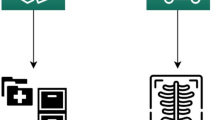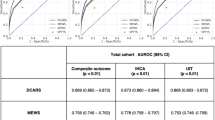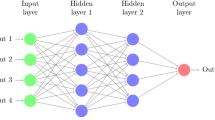Abstract
Background
Most trials in critical care have been neutral, in part because between-patient heterogeneity means not all patients respond identically to the same treatment. The Precision Care in Cardiac Arrest: Influence of Cooling duration on Efficacy in Cardiac Arrest Patients (PRECICECAP) study will apply machine learning to high-resolution, multimodality data collected from patients resuscitated from out-of-hospital cardiac arrest. We aim to discover novel biomarker signatures to predict the optimal duration of therapeutic hypothermia and 90-day functional outcomes. In parallel, we are developing a freely available software platform for standardized curation of intensive care unit–acquired data for machine learning applications.
Methods
The Influence of Cooling duration on Efficacy in Cardiac Arrest Patients (ICECAP) study is a response-adaptive, dose-finding trial testing different durations of therapeutic hypothermia. Twelve ICECAP sites will collect data for PRECICECAP from multiple modalities routinely used after out-of-hospital cardiac arrest, including ICECAP case report forms, detailed medication data, cardiopulmonary and electroencephalographic waveforms, and digital imaging and communications in medicine files (DICOMs). We partnered with Moberg Analytics to develop a freely available software platform to allow high-resolution critical care data to be used efficiently and effectively. We will use an autoencoder neural network to create low-dimensional representations of all raw waveforms and derivative features, censored at rewarming to ensure clinical usability to guide optimal duration of hypothermia. We will also consider simple features that are historically considered to be important. Finally, we will create a supervised deep learning neural network algorithm to directly predict 90-day functional outcome from large sets of novel features.
Results
PRECICECAP is currently enrolling and will be completed in late 2025.
Conclusions
Cardiac arrest is a heterogeneous disease that causes substantial morbidity and mortality. PRECICECAP will advance the overarching goal of titrating personalized neurocritical care on the basis of robust measures of individual need and treatment responsiveness. The software platform we develop will be broadly applicable to hospital-based research after acute illness or injury.





Similar content being viewed by others
References
Santacruz CA, Pereira AJ, Celis E, Vincent JL. Which multicenter randomized controlled trials in critical care medicine have shown reduced mortality? A systematic review. Crit Care Med. 2019;47:1680–91.
Iwashyna TJ, Burke JF, Sussman JB, Prescott HC, Hayward RA, Angus DC. Implications of heterogeneity of treatment effect for reporting and analysis of randomized trials in critical care. Am J Respir Crit Care Med. 2015;192:1045–51.
Olai H, Thorneus G, Watson H, et al. Meta-analysis of targeted temperature management in animal models of cardiac arrest. Intensive Care Med Exp. 2020;8:3.
Bernard SA, Gray TW, Buist MD, et al. Treatment of comatose survivors of out-of-hospital cardiac arrest with induced hypothermia. N Engl J Med. 2002;346:557–63.
Hypothermia after Cardiac Arrest Study G. Mild therapeutic hypothermia to improve the neurologic outcome after cardiac arrest. N Engl J Med. 2002;346:549–56.
Lascarrou JB, Merdji H, Le Gouge A, et al. Targeted temperature management for cardiac arrest with nonshockable rhythm. N Engl J Med. 2019;381:2327–37.
Dankiewicz J, Cronberg T, Lilja G, et al. Hypothermia versus Normothermia after Out-of-Hospital Cardiac Arrest. N Engl J Med. 2021;384:2283–94.
Coppler PJ, Elmer J, Calderon L, et al. Validation of the Pittsburgh Cardiac Arrest Category illness severity score. Resuscitation. 2015;89:86–92.
Sekhon MS, Ainslie PN, Griesdale DE. Clinical pathophysiology of hypoxic ischemic brain injury after cardiac arrest: a “two-hit” model. Crit Care. 2017;21:90.
Callaway CW, Coppler PJ, Faro J, et al. Association of initial illness severity and outcomes after cardiac arrest with targeted temperature management at 36 degrees C or 33 degrees C. JAMA Netw Open. 2020;3:e208215.
Nishikimi M, Ogura T, Nishida K, et al. Outcome related to level of targeted temperature management in postcardiac arrest syndrome of low, moderate, and high severities: a nationwide multicenter prospective registry. Crit Care Med. 2021;49:e741–50.
Elmer J, Coppler PJ, May TL, et al. Unsupervised learning of early post-arrest brain injury phenotypes. Resuscitation. 2020;153:154–60.
Influence of Cooling Duration on Efficacy in Cardiac Arrest Patients (ICECAP). 2021. https://clinicaltrials.gov/ct2/show/NCT04217551. Accessed Jun 16, 2021.
Foreman B, Lissak IA, Kamireddi N, Moberg D, Rosenthal ES. Challenges and opportunities in multimodal monitoring and data analytics in traumatic brain injury. Curr Neurol Neurosci Rep. 2021;21:6.
Rodriguez A, Smielewski P, Rosenthal E, Moberg D. Medical device connectivity challenges outline the technical requirements and standards for promoting big data research and personalized medicine in neurocritical care. Mil Med. 2018;183:99–104.
Ge W, Jing J, An S, et al. Deep active learning for interictal ictal injury continuum EEG patterns. J Neurosci Methods. 2021;351:108966.
Struck AF, Rodriguez-Ruiz AA, Osman G, et al. Comparison of machine learning models for seizure prediction in hospitalized patients. Ann Clin Transl Neurol. 2019;6:1239–47.
Citerio G, Park S, Schmidt JM, et al. Data collection and interpretation. Neurocrit Care. 2015;22:360–8.
Cabeleira M, Ercole A, Smielewski P. HDF5-Based data format for archiving complex neuro-monitoring data in traumatic brain injury patients. Acta Neurochir Suppl. 2018;126:121–5.
Nolan JP, Sandroni C, Bottiger BW, et al. European Resuscitation Council and European Society of Intensive Care Medicine guidelines 2021: post-resuscitation care. Intensive Care Med. 2021;47:369–421.
Callaway CW, Donnino MW, Fink EL, et al. Part 8: post-cardiac arrest care: 2015 American Heart Association Guidelines Update for Cardiopulmonary Resuscitation and Emergency Cardiovascular Care. Circulation. 2015;132:S465–82.
Elmer J, Gianakas JJ, Rittenberger JC, et al. Group-based trajectory modeling of suppression ratio after cardiac arrest. Neurocrit Care. 2016;25:415–23.
Elmer J, Jones BL, Zadorozhny VI, et al. A novel methodological framework for multimodality, trajectory model-based prognostication. Resuscitation. 2019;137:197–204.
Steinberg A, Callaway CW, Arnold RM, et al. Prognostication after cardiac arrest: results of an international, multi-professional survey. Resuscitation. 2019;138:190–7.
Virani SS, Alonso A, Aparicio HJ, et al. Heart Disease and Stroke Statistics-2021 update: a report from the American Heart Association. Circulation. 2021;143:e254-743.
Chen N, Callaway CW, Guyette FX, et al. Arrest etiology among patients resuscitated from cardiac arrest. Resuscitation. 2018;130:33–40.
Novak R, Bahri Y, Abolafia DA, Pennington J, Sohl-Dickstein J. Sensitivity and generalization in neural networks: an empirical study. arXiv 2018. https://arxiv.org/abs/1802.08760.
Ghorbani A, Abid A, Zou J. Interpretation of neural networks is fragile. Proc AAAI Conf Artif Intell. 2019;33:3681–8.
Muggeo VM. Estimating regression models with unknown break-points. Stat Med. 2003;22:3055–71.
Elkan C. The foundations of cost-sensitive learning. In: Proceedings of the 17th international joint conference on Artificial intelligence, vol 2. Seattle: Morgan Kaufmann Publishers Inc.; 2001. p. 973–8.
Kukar M, Kononenko I. Cost-sensitive learning with neural networks. ECAI. 1998.
Nielsen N, Wetterslev J, Cronberg T, et al. Targeted temperature management at 33 degrees C versus 36 degrees C after cardiac arrest. N Engl J Med. 2013;369:2197–206.
Funding
All study authors are supported on Grants from the NIH to Drs. Hirsch and Elmer for this work (Grant Nos. 5K23NS097629, 5R01NS119825).
Author information
Authors and Affiliations
Consortia
Contributions
JE: substantial contributions to the conception and design of the work; drafted the article; critical revisions for important intellectual content; and agree to be accountable for the accuracy and integrity of the work. ZH: substantial contributions to the conception and design of the work; critical revisions for important intellectual content; and agree to be accountable for the accuracy and integrity of the work. TM: substantial contributions to the conception and design of the work; critical revisions for important intellectual content; and agree to be accountable for the accuracy and integrity of the work. EO: substantial contributions to the conception and design of the work; critical revisions for important intellectual content; and agree to be accountable for the accuracy and integrity of the work. RM: substantial contributions to the conception and design of the work; critical revisions for important intellectual content; and agree to be accountable for the accuracy and integrity of the work. SK: substantial contributions to the conception and design of the work; critical revisions for important intellectual content; and agree to be accountable for the accuracy and integrity of the work. JS: substantial contributions to the conception and design of the work; critical revisions for important intellectual content; and agree to be accountable for the accuracy and integrity of the work. EM: substantial contributions to the conception and design of the work; critical revisions for important intellectual content; and agree to be accountable for the accuracy and integrity of the work. RGG: substantial contributions to the conception and design of the work; critical revisions for important intellectual content; and agree to be accountable for the accuracy and integrity of the work. KGH: substantial contributions to the conception and design of the work; drafted the article; and agree to be accountable for the accuracy and integrity of the work. The final version of the manuscript was approved by all authors.
Corresponding author
Ethics declarations
Conflict of interest
Richard Moberg, Ethan Moyer, and Jesse Stover are employees of Moberg Analytics.
Ethical approval/informed consent
No ethical approval is relevant for this article.
Additional information
Publisher's Note
Springer Nature remains neutral with regard to jurisdictional claims in published maps and institutional affiliations.
Rights and permissions
Springer Nature or its licensor holds exclusive rights to this article under a publishing agreement with the author(s) or other rightsholder(s); author self-archiving of the accepted manuscript version of this article is solely governed by the terms of such publishing agreement and applicable law.
About this article
Cite this article
Elmer, J., He, Z., May, T. et al. Precision Care in Cardiac Arrest: ICECAP (PRECICECAP) Study Protocol and Informatics Approach. Neurocrit Care 37 (Suppl 2), 237–247 (2022). https://doi.org/10.1007/s12028-022-01464-9
Received:
Accepted:
Published:
Issue Date:
DOI: https://doi.org/10.1007/s12028-022-01464-9




